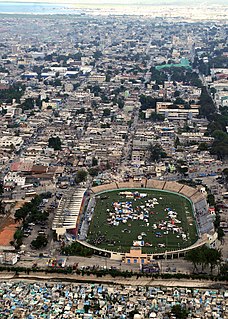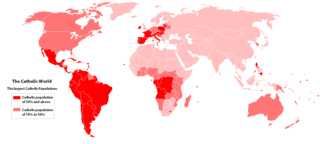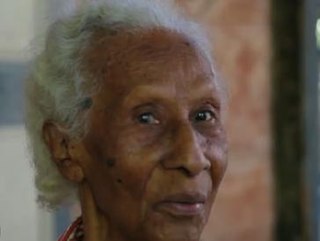
Haiti, officially the Republic of Haiti and formerly called Hayti, is a country located on the island of Hispaniola in the Greater Antilles archipelago of the Caribbean Sea, to the east of Cuba and Jamaica and south of The Bahamas and the Turks and Caicos Islands. It occupies the western three-eighths of the island which it shares with the Dominican Republic. To its south-west lies the small island of Navassa Island, which is claimed by Haiti but is disputed as a United States territory under federal administration. Haiti is 27,750 square kilometers (10,714 sq mi) in size and has an estimated population of 11.1 million, making it the most populous country in the Caribbean Community (CARICOM) and the second-most populous country in the Caribbean after Cuba.

Port-au-Prince is the capital and most populous city of Haiti. The city's population was estimated at 987,310 in 2015 with the metropolitan area estimated at a population of 2,618,894. The metropolitan area is defined by the IHSI as including the communes of Port-au-Prince, Delmas, Cite Soleil, Tabarre, Carrefour, and Pétion-Ville.

Cap-Haïtien, often referred to as Le Cap or Au Cap, is a commune of about 190,000 people on the north coast of Haiti and capital of the department of Nord. Previously named Cap‑Français and Cap‑Henri, it was historically nicknamed the Paris of the Antilles, because of its wealth and sophistication, expressed through its architecture and artistic life. It was an important city during the colonial period, serving as the capital of the French Colony of Saint-Domingue from the city's formal foundation in 1711 until 1770 when the capital was moved to Port-au-Prince. After the Haitian Revolution, it became the capital of the Kingdom of Northern Haiti under King Henri Christophe until 1820.

The culture of Haiti is an eclectic mix of African, Taino and European elements due to the French colonization of Saint Domingue and its large and diverse enslaved African population, as is evidenced in the Haitian language, music, and religion.

Little Haiti, is a neighborhood of Miami, Florida, United States. It is known historically as Lemon City, Little River and Edison. It is home to many Haitian immigrant residents, as well as many residents from the rest of the Caribbean. The fastest growing group in the area is Hispanic.

Cité Soleil is an extremely impoverished and densely populated commune located in the Port-au-Prince metropolitan area in Haiti. Cité Soleil originally developed as a shanty town and grew to an estimated 200,000 to 400,000 residents, the majority of whom live in extreme poverty. The area is generally regarded as one of the poorest and most dangerous areas of the Western Hemisphere and it is one of the biggest slums in the Northern Hemisphere. The area has virtually no sewers and has a poorly maintained open canal system that serves as its sewage system, few formal businesses but many local commercial activities and enterprises, sporadic but largely free electricity, a few hospitals, and two government schools, Lycee Nationale de Cite Soleil, and Ecole Nationale de Cite Soleil. For several years until 2007, the area was ruled by a number of gangs, each controlling their own sectors. But government control was reestablished after a series of operations in early 2007 by the United Nations Stabilization Mission in Haiti (MINUSTAH) with the participation of the local population.

The Stade Sylvio Cator is a multi-purpose stadium in Port-au-Prince, Haiti. It is currently used mostly for association football matches, and is turfed with artificial turf.

The Catholic Church in Haiti is part of the worldwide Catholic Church, under the spiritual leadership of the Pope, the curia in Rome and the Conference of Haitian Bishops.

The Hotel Oloffson is an inn in central Port-au-Prince, Haiti. The main structure of the hotel is a 19th-century Gothic gingerbread mansion set in a lush tropical garden. The mansion was built as a residence for the powerful Sam family, including two former presidents of Haiti. The hotel was the real-life inspiration for the fictional Hotel Trianon in Graham Greene's famous 1966 novel The Comedians. Since 1990, the hotel has been the regular performance venue of the mizik rasin band, RAM, famous for their protest music during the Raoul Cédras military dictatorship from 1991 to 1994. The hotel was one of Port-au-Prince's only hotels left standing after the 2010 Haitian earthquake and the worldwide media subsequently decamped to the hotel and its grounds during the disaster.

Kenscoff is a commune in the Port-au-Prince Arrondissement, in the Ouest department of Haiti, located in the foothills of the Chaîne de la Selle mountain range, some 10 kilometres to the southeast of the capital city of Port-au-Prince. The altitude is approximately 1500 meters, making the town the highest permanent settlement in the Caribbean. It has a population of around 52,200.
Haitian art is a complex tradition, reflecting African roots with strong Indigenous American and European aesthetic and religious influences. It is an important representation of Haitian culture and history.

Tourism in Haiti is an industry that has generated just under a million arrivals in 2012, and is one of the main sources of revenue for the nation. With its favorable climate, second longest coastline of beaches and most mountainous ranges in the Caribbean, waterfalls, caves, colonial architecture and distinct cultural history, Haiti has had its history as an attractive destination for tourists. However, unstable governments have long contested its history and the country's economic development throughout the 20th century.

SALSA d'Haïti is a Haitian airline headquartered at Toussaint Louverture International Airport in Port-au-Prince, Haiti. It flies several round trip flights daily between Cap-Haitien and Port-au-Prince.

John Renwick McAslan, is a British architect.

The National Palace was the official residence of the President of Haiti, located in Port-au-Prince, facing Place L'Ouverture near the Champs de Mars. It was severely damaged during a devastating earthquake in 2010. The ruins of the building were demolished in 2012 under the Martelly administration, and plans to rebuild the palace were announced by Jovenel Moise in 2017.

The 2010 Haiti earthquake was a catastrophic magnitude 7.0 Mw earthquake, with an epicenter near the town of Léogâne (Ouest) and approximately 25 kilometres (16 mi) west of Port-au-Prince, Haiti's capital. The earthquake occurred at 16:53 local time on Tuesday, 12 January 2010.
The Port-au-Prince Haiti Temple is a temple of The Church of Jesus Christ of Latter-day Saints in the Port-au-Prince suburb of Pétionville, Haiti. It is located adjacent to an existing meetinghouse at the intersection of Route de Frères and Impasse Saint-Marc.

Haiti–India relations refers to the international relations between Haiti and India. The Embassy of India in Havana, Cuba is concurrently accredited to Haiti.

Bois Verna is a neighborhood of Port-au-Prince, Haiti. It has one of the largest concentration of the historic Haitian gingerbread style houses present.

VivianeGauthier was a Haitian dancer and teacher of Haitian folkloric dance who studied Haitian folklore with Katherine Dunham-trained Lavinia Williams of which she is considered the heir. She eventually opened the Viviane Gauthier School of Dance in Port-au-Prince, Haiti.


















